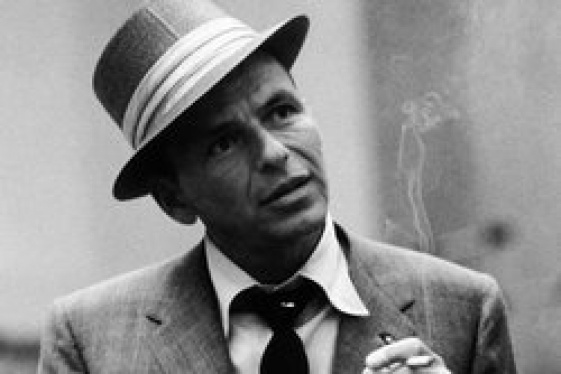
Francesco Martinelli (Professor of Jazz History)
Quando il Presidente Thomas Jefferson scelse i musicisti catanesi per la prima band della neonata Marina americana

There are many episodes in the history of the United States that have seen Italians as protagonists. Some are very well known; others deserve to be known better.
The subject of this interview is of the second type: not many people know about this, but it is really very interesting and tells how much since their birth the United States - and its leaders - have recognized the skills and talents of Italians. This time we talk about music, and we thank Prof. Francesco Martinelli who tells us about when President Thomas Jefferson chose some musicians from Catania for the first band of the newborn American Navy.
Prof. Martinelli, we ask you to help us understand the context of this incredible story, which begins with the declaration of independence of the United States, July 4, 1776...
To retrace the history of the birth of American military music, we must refer to the period immediately after the War of Independence and therefore the birth of the United States of America. In this regard, there is a famous painting dedicated to the revolution, entitled "The Spirit of '76", where there are three figures carrying respectively a flag, a drum and a flute. This type of band is called "Fifes and drums" and represents the typical military musical accompaniment before the advent of Sicilian musicians in 1800.
When does it happen that the newborn US Navy decides to start an actual musical band? Is it true that it was Thomas Jefferson himself, as a lover of the Italian music repertoire, who decided to call Italian musicians instead of American ones?
Exactly, it is Thomas Jefferson who, as a musician, violinist and lover of Italian music, asks the soldiers to hire Italian musicians. When he asks the commander of the Marine Corps to set up a military band, he suggests doing it with musicians from the Kingdom of the Two Sicilies (we are in 1800, and Italy is not yet unified). The United States, in this period, is fighting its first war abroad against the "Coast of the Barbarians", that is, the territories of Libya and Tunisia. The war stems from the fact that these states, which had recently gained independence from the Ottoman Empire, had stipulated non-aggression treaties for merchant traffic with the European States, but not with the newborn American state. Soon, they capture American ships for ransom, thus provoking war. In this context, the United States obtains the support of the Sicilian ports. Among them is the port of Catania, which is used not so much as a military port, but more as a relaxation area for the military, where shows, dances and orchestra concerts take place. That is how the commander of the Marine Corps, who has the task of hiring a military band, knows maestro Carusi and his orchestra.
Who were the Italian musicians from Catania chosen to be enrolled in the band, and therefore also in the Marines, and how did they live?
Before the enlistment, the musicians played during parties and celebrations of the Catania society, in the halls and in the city theatre. Their musical production was very diverse; they composed music for church, dance and to commemorate events and anniversaries. In this period there was still a century to go before the advent of sound recording: therefore, whenever there was a need for music, an orchestra would be called. It is not very clear why the Carusi orchestra was chosen; its members were offered a reasonable fee and a sum for the family. The orchestra was thus enlisted in the Marines: its members were no longer mere musicians, but real soldiers.
The story here almost becomes a novel: not everything goes as it should, right?
Yes, before arriving in Washington DC, the members of the Carusi orchestra find themselves taking part in the fighting, having to serve the pieces of cannon used to bombard and conquer the states of the north coast of Africa.
Even once they get to Washington DC, things are not easy for the recruited musicians from Catania...
Once they arrive in Washington DC in 1803, they find a place that is actually just a military camp, not a city like they expected. Also, in the meantime, there is a new commander of the Marine Corps who, before their arrival, had already organized another band formed by English musicians. This creates a moment of tension as the members of the Carusi orchestra are placed in an already existent group.
There are two stories that are perhaps the most interesting. The first is that of Venerando Pulizzi...
Vernando Pulizzi is one of the four members of the Pulizzi family who, with great determination, overcomes all the obstacles that are put in front of him and manages to become the director of the Marines band twice
The other remarkable story is that of Maestro Gaetano Carusi...
True, he shows great musical and entrepreneurial ability because, when he discovers the difficulties of joining the Marine band, he decides to leave and rent a large hall, later called "Salone Carusi". It became the reference point for the social life of the American capital, a place where parties and dances of embassies and ministries were held. The Salon then became a cinema and was finally dismantled.
Gaetano Carusi continues to devote his whole life to music, handing down the activities he started and his knowledge to his children, who expand the family business more and more, dedicating themselves to dance and songwriting. In this regard, they are at the center of one of the first legal cases that are foundational for the discipline of copyright and therefore for the protection of the rights of authors. The debate develops around the possibility for somebody to rearrange and republish, under his own name, the musical production of others. The subject of this controversy is the song called "Old Arm Chair".
These are not the only examples of Italian musicians who are protagonists of American military bands, right?
That's right. Among the various artists there is also Giuseppe Creatore, a superstar of the military orchestra, which at the time was one of the cheapest forms of popular entertainment. People who did not have the social access or the economic possibilities to go to the theater would go to the park, where the military band played music from operas, adaptations from symphonic songs, military marches and more. Creatore’s orchestra was very large and well known, because it toured the United States at a time when popular music was spreading more and more, thanks also to recordings. At the time, in the United States, having the band director with an Italian name was a guarantee of quality.
In this period, the American recording industry publishes various catalogs intended for minority immigrants; even before discovering African American music, blues and jazz, one realizes that there is an important market for recordings that remind immigrants of their origins with traditional dances and comic scenes.
From the mid-20s onwards, there is a group called "I Quattro Siciliani” (The Four Sicilians), led by mandolinist and composer Rosario Catalano, which becomes a constant presence in the dance music of Italian immigrants because their polkas and tarantellas, recalling the different traditions of the southern areas, are very successful. The formation of the Quattro Siciliani is very simple: clarinet, mandolin, double bass and guitar. They collaborated with the first artists of the American popular music scene, and therefore the Italian and Sicilian presence in the commercial music world of the United States of America was constant throughout the century.
Alongside them, other famous Italian musicians in popular music are the cornet player Santi Tafarella and the Piedmont accordionist Pietro Deiro, who also records ragtime pieces. We must not forget that the first printed blues was published by an Italian emigrant, Antonio Maggio, in New Orleans in 1908, before W. C. Handy wrote his Memphis Blues and St. Louis Blues.
The Sicilian influence in the American music scene obviously does not stop at this incredible story. Let's remember that the first jazz record was recorded by Nick La Rocca, born in New Orleans but of Sicilian origin: and just in New Orleans, where a ship arrived every week from Palermo, many musicians of Sicilian origin made their way. Is there a particular reason for this?
It was mainly the Italians from those areas who immigrated to the United States. In fact, the majority of those who came from northern Italy moved to South America. Moreover, the Sicilian culture and musical tradition was quite vast and already enjoyed great prestige in America.
In particular, the city of New Orleans becomes the main hub of the music scene and, in that city, there is the largest Italian community. In fact, many Italian operas are staged in its Italian theater, enjoying success and admiration among American musicians. In New Orleans a very rich environment was created, full of classical and pop culture. It is important to underline that the coexistence between Americans and Italians did not go on without difficulties and misunderstandings: but there is no doubt that the Italian community, thanks to the appreciation and support of the local people, managed to grow a lot from the musical point of view, finding an environment conducive to its artistic flourishing.
You may be interested
-
Cathedral of St. John the Divine, Oratorio S...
For the first time ever, The Cathedral of St. John the Divine, in collaboration with the O...
-
Davide Gambino è il miglior "Young Italian F...
Si intitola Pietra Pesante, ed è il miglior giovane documentario italiano, a detta della N...
-
Frank Sinatra 100th Anniversary Celebration
Hoboken’s favorite son, Frank Sinatra, continues to evoke images of the good life nearly 1...
-
Holiday Concert with Micheal Castaldo and Ma...
The Mattatuck Museum (144 West Main St. Waterbury, CT 06702) is pleased to celebrate...
-
ITALIAN DINNER and RECEPTION...
The National Council for the Promotion of Italian Language in American Schools(National CO...
-
Italian American Culture Night
Tuesday, April 14 - 6.30 pm EDTSt. James Church Rocky Hill - 767 Elm St, Rocky Hill,...
-
Italian Americans media and beyond: between...
The Department of Italian invites you to a lecture by Fulvio S. Orsitto who is an Associat...
-
Italian Guitarist Roberto Fabbri to Perform...
For the final performance of his spring solo tour, Italian classical guitarist Roberto Fab...



























